Learning at Unity Classical
Unity Classical opened in August 2017 as a K–2 School. Each year, we will continue to add a grade until we are a K–8 school in 2023. It is important to realize that we are intentionally working with a renewing movement in education that is capturing teachers and students wherever it is being used. And it is also notable that classical schools tend to outperform anything else. This model was almost lost to America in the last two generations, as progressive educational practices replaced classical approaches. Classical had worked for all of America’s history and thousands of years before that, but in the 1960’s America was quickly moving into new models of teaching.
Interestingly, where classical education is being practiced again the outcomes are almost universally superior.
Classical education builds in a spiraling and sequential manner so that in each stage of a child’s developing mental ability they are taken more deeply into the subject matter with which they are already acquainted. Each subject has its own grammar, logic, and rhetoric. Those stages of learning also correspond to the formal breaks in the K–12 education system that offers elementary, middle, and high school.
Elementary school students tend to think concretely (this is when they readily absorb the grammar of each subject), middle school students tend to think conceptually (this is when they want to know why, and then want to argue with the subject. This is the phase they more naturally learn logic), and high school students become almost obsessed with self-expression (so this is the stage called rhetoric in which we teach the student how to express their argument winsomely, thoroughly and with a depth of fact). These stages of learning correspond appropriately with learning the grammar of a subject (elementary), the logic of a subject (middle school), and the rhetoric of a subject (high school).
For example, in elementary school history class, a student might learn the dates and participants in the American Civil War, even such things as the color of uniforms. While they memorize this kind of information, they still do not understand it. This is fine. But then when their mental approach to learning transitions from an obsession with a concrete understanding of facts to conceptual understanding of information (that is, they have moved from elementary to middle school years), now they become interested in the reasons why and the forces that played into those reasons.
Now they want to argue about what they are learning. So, in this stage of learning, they are taught the rules of logic and how to go more deeply into the subject with which they were first acquainted in elementary school. Then in high school, when most students are deeply concerned with self-expression we teach the student how to winsomely express a deeper understanding of their subject. Now they learn about the wide array of forces that played into the reasons for the Civil War, how those reasons were understood and misunderstood in their day, and what that might mean for our own day and the issues of conflict that enter our culture.

